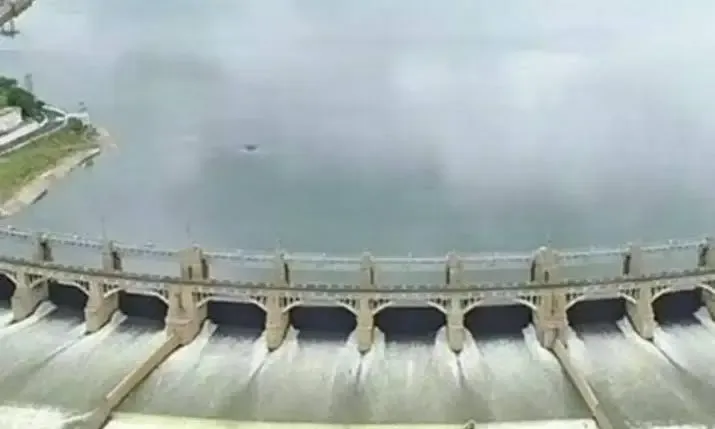Has Tamil Nadu's Mettur Dam Reached Full Capacity Again in 2025?

Synopsis
Key Takeaways
- Mettur Dam reached full capacity of 120 feet for the third time this year.
- Water discharge increased to 31,000 cusecs to manage levels.
- Farmers benefit from enhanced irrigation due to the dam.
- Flood warnings issued for residents near the Cauvery river.
- Safety measures in place, restricting public access near the dam.
Chennai, July 20 (NationPress) The Mettur Dam, a vital water reservoir in Tamil Nadu, has achieved its maximum capacity of 120 feet for the third occasion this year, following persistent inflows caused by heavy rainfall in the Western Ghats and adjacent areas.
To manage the escalating water levels, authorities have raised the water discharge from the dam from 22,500 cubic feet per second (cusecs) to 31,000 cusecs.
The consistent rise in inflows has led the Water Resources Department to make this adjustment to avert overflow and ensure the dam's structural integrity.
This surge in water release has delighted farmers in the delta districts, who depend significantly on the Cauvery river for irrigation.
As monsoon rains replenish the dam, agricultural activities are anticipated to accelerate in the upcoming weeks, providing a much-needed boost to the kharif cultivation season.
However, while farmers celebrate the plentiful water supply, district administrations have issued a flood warning for residents along the Cauvery riverbanks.
Individuals in low-lying and flood-prone regions are advised to remain alert, with local officials keeping a close watch on the situation.
The Mettur Dam, also referred to as the Stanley Reservoir, plays an essential role in regulating the Cauvery river system and supporting irrigation across numerous districts in Tamil Nadu.
Officials have declared that discharge levels will be continuously assessed based on inflow patterns and rainfall intensity in the coming days.
Officials from the Revenue and Disaster Management Department are on high alert, collaborating with local entities to prepare for any emergency evacuations or relief efforts.
Meanwhile, tourists and the public have been prohibited from entering areas near the dam and riverbanks for safety precautions.
This year, the dam had previously reached its full capacity in January and June, highlighting the intensity of this year's monsoon. Authorities have called on the public to stay cautious and adhere to official guidelines.






